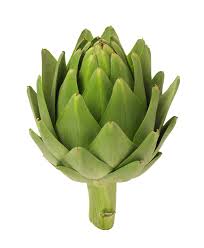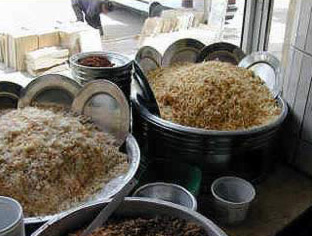I moved back home. A while ago. It’s been two months. I decided to come back because I love Toronto so much, weird eh? Yeah, no. I knew that staying an extra year would mean never going back to Egypt. It was amazing during my first month. Everything was perfect, I was appreciating everything, the weather, the people, the outings, everything. That was in Sahel, the North Coast. This 
The Move
Artichoke with Béchamel sauce (خرشوف بالبشاميل)
Artichoke is one of those underrated dishes. We see it all the time but never think of buying it and I agree the vegetable does look hectic. That’s why I usually buy the frozen option which is not the best because of course having the fresh option is always better.

Béchamel sauce gives me a lot of ideas, not that this dish is my idea, but I feel like I can create exquisite meals using it. So back to Artichoke, my mum has the best recipes ever, no she doesn’t like cooking but she enjoys creating recipes. The first time Mum invited Papy’s family over it was a disaster, as in the food was not fully cooked, disaster. Now she knows how to cook but she doesn’t like cooking. (more…)
Sharkaseya (شركسية)
A Turkish dish that most Egyptians with Turkish descents make regularly in their homes. The combination of the ingredients of this dish doesn’t make it seem like it’s the best dish to try but it was one of my favorite dishes to cook.
Moussaka (مسقعة)
If you haven’t realized by now, Egyptian cuisine is very similar to the Greek cuisine. Moussaka (pronounced ‘mussakaa’) is a widely known dish in the mediterranean area, especially in Greece. The name ‘moussaka’ came from the arabic language and the name was given to several countries such as in Turkey, it’s called ‘musakka’. The literal meaning of the word ‘moussaka’ is chilled since it’s a cold plate.
Macaroni béchamel (مكرونة بشاميل)
Now I can’t call this dish entirely Egyptian but most Egyptians know this dish and make it in their house at least once a month. This dish is originally a Greek dish called Pastitsio, which is an Italian version of the dish ‘Pasticcio di pasta‘.
What am I eating?
This baked dish is typically made of five layers: (from the bottom)
1) Penne pasta
2) cooked lean beef
3) Another layer of penne pasta
4) Béchamel sauce
5) Cheese (optional)
- Yes, it’s fattening but it’s totally worth it. With a mixture of carbohydrates and protein one serving of this dish fills you up easily.
Egyptian Fattah (فتة)
Eid is a feast for Muslims that comes after the last day of fasting in Ramadan. So to celebrate, a dish called Fatteh. Now like all Arab dishes, there are a lot of versions for Fatteh but of course I cook the Egyptian one. Yes, it’s the best. So last Eid, which was in October, I spent Eid with my best friend’s family and they were having people over. We were supposed to eat Fatteh, the only problem was that her mum doesn’t know how to cook it. She called me to ask, “Hey Mariam! Quick question, do you know how to make fatteh?” To be honest I didn’t know how but my motto is “I can cook anything!” So I said “Yeaah, of course,” she asked me to cook for her that weekend. I was so happy and nervous at the same time, what if I screw things up?
Fava beans and Falafel (فول و طعمية)
Ful (pronounced ‘fool’) and Falafel is breakfast for many Egyptians. Made of mashed fava beans, ful is a combination of protein and carbohydrates. It’s found in Canada but it’s not that popular, it’s very filling and contains almost 0 fat.
It’s sold in many forms in Egypt , for some the best way to eat it is from a stand. There are as many ful stands in Egypt as there are hot dog stands in NYC and Toronto. Workers usually gather around it in the morning and start their journey with 2-3 sandwiches. Usually you’ll find all average Egyptians gathered around at around 7 in the morning. I use to see them everyday on my way to school. Now it’s too expensive for an average Egyptian to eat from the well-known ful and falafel shops.
Feteer (فطير)
Back home, feteer, or pie, is a dish that no one can hate. Feteer can be made with all kinds of toppings or it can be made plain. Feteer was introduced in the ancient time because Pharaohs wanted to store their food from the hot, sandy weather of the desert. The pie crust was inedible as they used it for baking. The Pharaohs pie was first filled with honey, nuts, and fruits and then another pie was introduced with savory meat. When visitors from different parts of the world tasted this pie, they were fascinated. Later, Greeks stole the recipe to make their own version of it. 
As everything changed over time, pie had adjustments made to it. When I used to live in Egypt every Friday morning, the whole family would have breakfast together. So my mum buys feteer with milk and icing sugar from the feteer restaurant we have in our building. I know it sounds gross but it’s one of my favorite desserts. In fact it’s one of my traditions to eat this dessert before leaving Cairo every year, it’s a way of saying my goodbyes. The taste is a blend of goodness, the creaminess of the icing sugar melting in your mouth and milk filling in your thirst right away. I’m craving one already.
Koshary (كشري )
This weekend will be sunny and long. Everyone will want to go out all morning, chill in patios, and drink beer… but not my friends. We all gather in my friend’s house in downtown at around 3, hang out for a while and at around 6 we start asking what to eat. Now they usually look at me while asking the question, if I don’t respond right away they order pizza. This weekend before all this happens, I told them what I’ll be cooking on Saturday maybe Sunday, KOSHARY!!!
It would be very ignorant to call Koshary a dish for poor people, koshary is cheap and simple to make, yes, but it’s also a comfort dish for most Egyptian. During the 2011 revolution, Koshary was the source of energy for all protesters with at least 3 shops of koshary in tahrir square. Koshary is the first thing that comes to my mind when someone asks me of an Egyptian dish. Cooking it is an art, selling it is an art, even eating it is an art.It’s a dish to remind Egyptians that they have a unique culture. For an average Egyptian or even poor this dish is both affordable and delicious, it’s easy to cook but it’s not easy to get it right. In every neighborhood in Egypt there’s around 3 Koshary places and they all gain profit. The number koshary place in Egypt is “Koshary El Tahrir” , there are a lot of branches throughout the country as it’s the most delicious.





